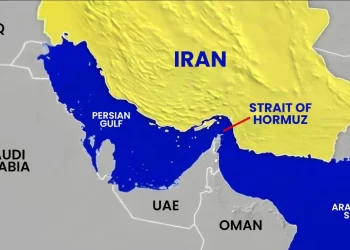Brent crude oil is a standard marker for the cost of oil. It’s also known as Europe Oil, and is used as a benchmark for all other global oils. Brent crude oil comes from the Brent field in the North Sea, which is why it’s also known as “North Sea Oil.” It was discovered in 1971 and remains one of the largest oil fields in the world.
Crude oil has many different prices depending on where you’re buying it and what type of oil it is. When it comes to purchasing crude, there are several variations to consider when researching prices on different oils: Light sweet vs sour; WTI vs Argus; ICE vs Dated Brent; and more. Read on for an overview of each variety and its pros and cons.
Oil Prices Today
Brent Crude Oil Chart & Live Price
What is Brent Crude?
Brent crude oil is a standard marker for the cost of oil. It’s also known as Europe Oil, and is used as a benchmark for all other global oils. Brent crude oil comes from the Brent field in the North Sea, which is why it’s also known as “North Sea Oil.” It was discovered in 1971 and remains one of the largest oil fields in the world. Stricter regulations and higher production costs make Brent a more expensive oil than its counterpart WTI crude. It’s also thicker and heavier than WTI, which means it cannot be easily shipped via pipeline. Brent crude oil is traded on the Intercontinental Exchange (ICE), along with several other commodity futures such as gold and natural gas.
WTI Crude
Western Texas Intermediate (WTI) is the benchmark for crude oil production in the United States. It’s also the most traded oil in the world, and is used to set the price for crude oil in Canada and Mexico. WTI is a light crude oil, meaning it has a low viscosity and is therefore easier to transport via pipeline. It is also sweeter than Brent crude, which means it contains less sulfur. WTI crude oil is priced against Brent crude oil, which means that each producer sets the price based on the Brent price. WTI prices are reported via the CME WTI Futures Contract, which has a daily settlement price based on the average of the daily closing prices for the WTI and Brent futures contracts.
Argus Crude
Another standard for crude oil prices is the Argus Crude Oil Index. Like Brent crude oil, it’s a global benchmark for all other oil types. The Argus Crude Oil Index is largely based on the WTI crude oil price, but it also takes into account the price of other major crude oils. The index is used for pricing long-term crude oil contracts, and is also a useful tool for predicting prices based on market conditions. The price of WTI, Brent and Argus crude oils are all monitored daily. The three main global benchmarks for crude oil price are Brent, WTI, and Argus. The Brent and WTI prices are typically used to set crude oil prices on futures contracts in the United States. The Argus price is used to set crude oil prices in Europe.
ICE Brent Crude
The Intercontinental Exchange (ICE) Brent Crude Oil Futures Contract is a futures contract based on Brent crude oil. Like other crude oil futures, it’s a financial contract in which two parties agree to buy or sell a certain amount of oil at a certain price on a certain date in the future. Investors use futures contracts to hedge against the risk of increased production costs, fluctuating demand and other risk factors that could cause the price of Brent crude oil to fluctuate. The ICE Brent crude oil futures contract is used to set crude oil prices in Europe. For example, if the Brent futures price is $40/barrel, a company in Europe that needs to buy crude oil may decide to pay $40/barrel for the Brent crude oil futures contract. If the Brent crude oil futures contract rises to $45/barrel at the time of settlement, the company would only pay $45/barrel for crude oil.
Dated Brent Crude
Dated Brent crude is the term used to describe the specific type of Brent crude oil used as the basis for contract prices. It’s often referred to as the Brent Basis Price and is the price of oil that was lifted and ready for delivery in the Brent field. Dated Brent crude oil has a specific delivery date and location where it can be picked up by a refiner. Dated Brent Crude is an important factor for refiners who are buying oil. A refinery typically contracts for crude oil deliveries six months in advance and/or takes delivery of dated Brent crude oil on the last day of the month, so that the oil can be processed and refined into gasoline and other petroleum products.
Basis and Forward Contracts for Oil Prices
The difference between Brent crude oil and WTI crude oil exists because of transportation and logistics issues, regional prices and other factors. The price difference between the two types of crude oil is referred to as the basis. If the basis is positive, Brent crude prices are higher than WTI crude prices, and vice versa if the basis is negative. The basis is important because refiners use it to decide which type of crude oil to use to produce gasoline and other refined products. If WTI crude oil is less expensive than Brent crude oil, refiners may decide to use WTI crude instead of Brent crude for their production.
Finding the Current Price of Brent Crud Oil
The price of Brent crude oil can be found using a variety of different resources. Each resource will give you the current price of Brent crude oil, as well as historical trends and graphs to help you understand trends and predict future prices. Online Resources: There are a variety of websites that provide current prices for Brent crude oil and other commodities. The two most notable websites for Brent crude oil prices are yahoo.com/finance and crackerbarrel.com. Offline Resources: To find the current price of Brent crude oil, you can also visit your local Brent crude oil market. These markets typically have a sign displaying the current price of Brent crude oil.
Conclusion
Brent crude oil is a standard marker for the cost of oil. It’s also known as Europe Oil, and is used as a benchmark for all other global oils. Brent crude oil comes from the Brent field in the North Sea and is the most traded oil in the world. The price of Brent crude oil can be found using a variety of online resources. You can also visit your local Brent crude oil market to find the current price. Brent crude oil prices are an important factor for refiners who decide which crude oil to use for their production.



